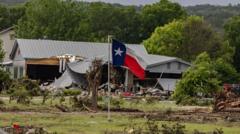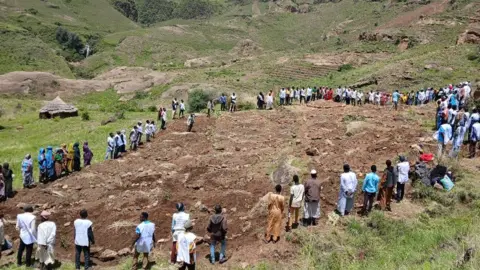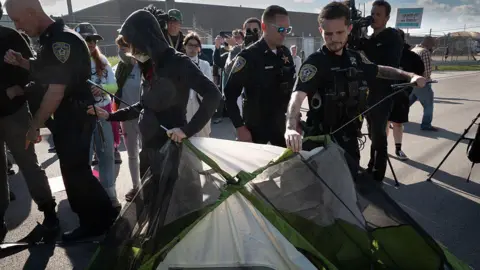Texas is grappling with severe scrutiny over the management of emergency alerts following devastating flash floods that resulted in the deaths of at least 120 individuals, with a staggering 96 casualties in the Kerrville area alone. Reports reveal that over 160 individuals remain unaccounted for, leading to growing public concern regarding the timeliness and effectiveness of communication to residents during the crisis.
At a recent press conference, Kerrville Police community services officer Jonathan Lamb was unable to provide clarity regarding potential failures in police radio communications that may have impeded timely warnings to the public. This inquiry follows increasing frustration from reporters and residents about the apparent lag in alert broadcasts, which may have contributed to the tragic outcomes.
On July 4, the Guadalupe River saw an alarming rise due to approximately 100 billion gallons of rain falling within a short timeframe. A firefighter upstream made an urgent call to the Kerr County Sheriff’s Office around 4:22 AM, requesting that residents receive warnings about the imminent danger of rising waters. However, official notifications did not reach the public until nearly six hours later, with the first alert from the CodeRED system only being issued approximately 90 minutes after the initial emergency call.
The tragedy has placed additional pressure on Kerr County officials as they navigate the aftermath of the flooding. Kerr County Sheriff Larry Leitha acknowledged during a press briefing that he was first made aware of the situation between 4 and 5 AM but stressed that current priorities lay with search and recovery efforts rather than an immediate investigation into the timeline of communications.
Despite weather alerts preceding the disaster, the absence of reliable cell service and a prevailing public desensitization to warning systems were cited as contributing factors for the lack of timely evacuations. The National Weather Service had issued warnings about potential flooding earlier, while the Texas Division of Emergency Management activated state resources in anticipation of the deluge.
In light of this calamity, President Donald Trump has signed a federal disaster declaration, enabling the Federal Emergency Management Agency (FEMA) to assist in recovery efforts. More than 2,100 responders are currently engaged in search and rescue missions utilizing helicopters, drones, and specialized dogs trained to detect human remains, indicating the extreme challenges they face amid hazardous conditions.
As search and recovery operations continue, the community's resolve remains strong, but the questions surrounding the emergency response may linger long after the waters recede.




















